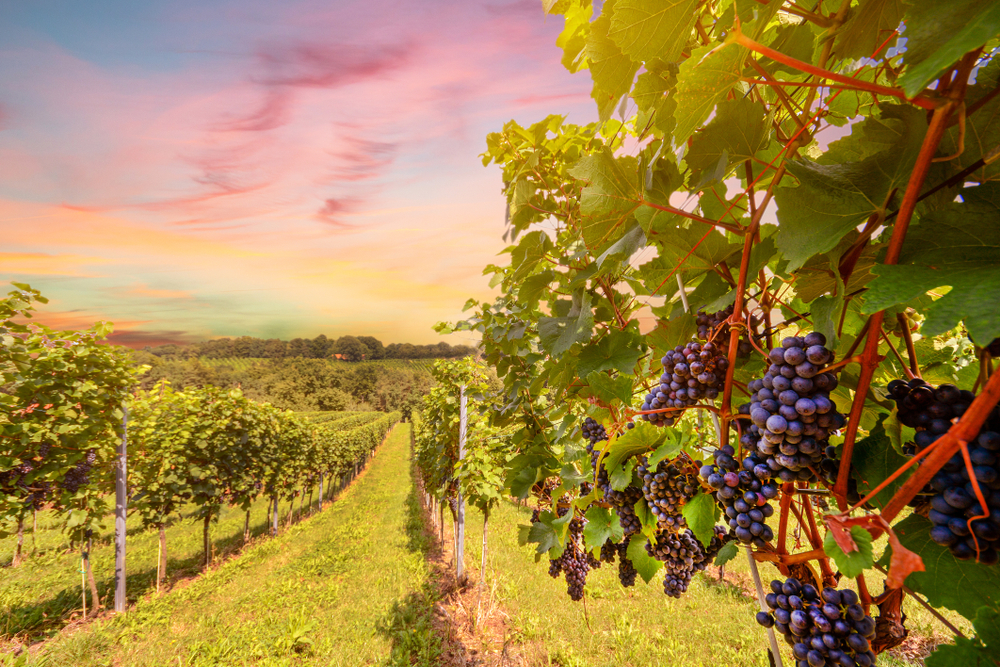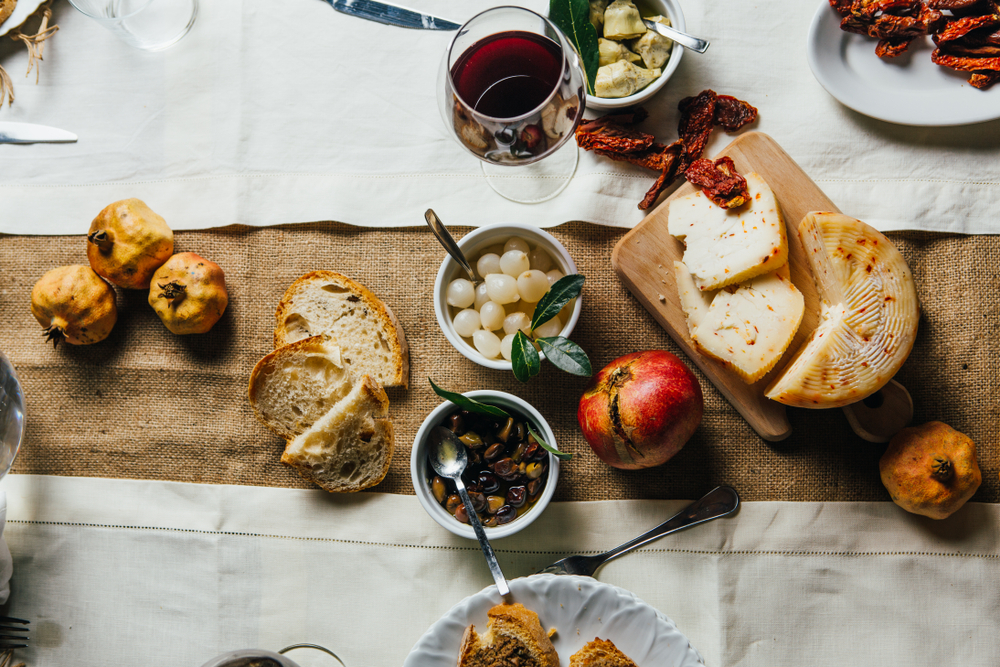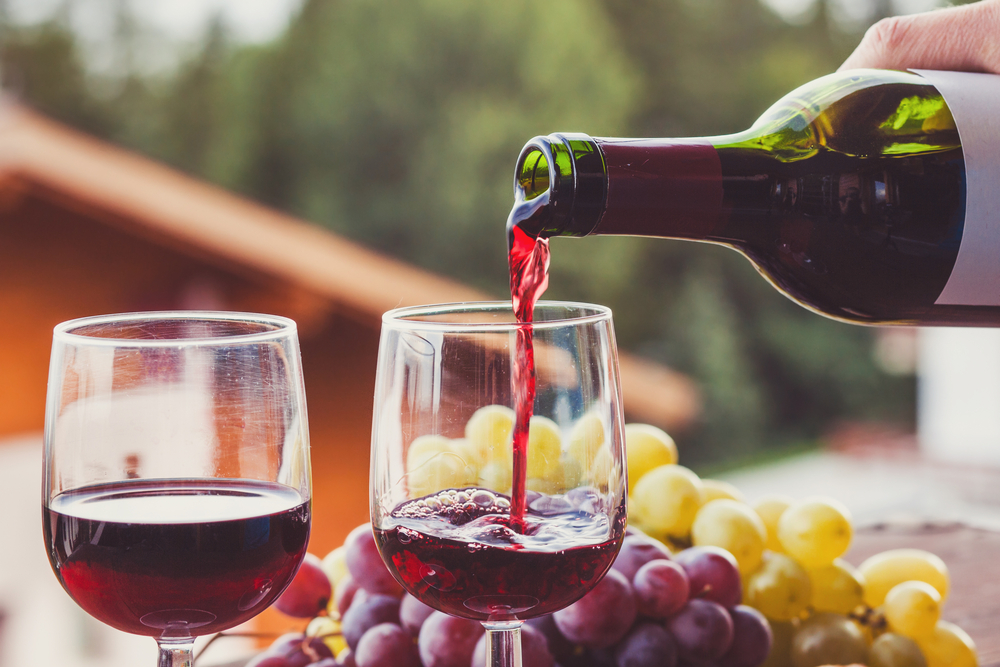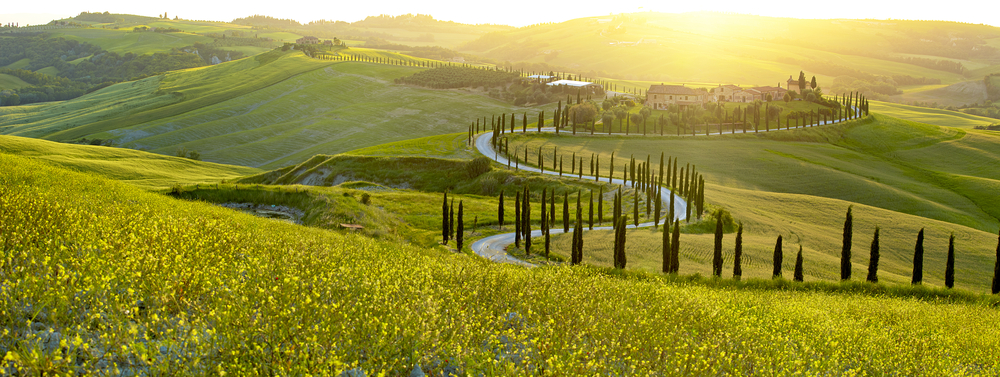Stretching from the Apennines to the Tyrrhenian Sea, the entirety of Tuscany feels like Eden on Earth: hills gently roll well beyond the horizon, adorned with the organized rows of vineyards and blanketed in the golden hues of the sun's rays. A day in the life of Tuscany isn't sleepy per se, it's just so serene that stress dissipates like mist-especially with the added benefit of Tuscan wine.
Just as daily life benefits from the wine, the wine benefits from the setting. Tuscany is renowned for the Sangiovese grape, though all grapes grown here benefit prominently from the combination of steady sunlight and higher altitude, combining for wines that are rich in flavor and aromatics. Whether you're savoring the ranks of the formal classifications of the region, the robust "Super Tuscans," the sumptuous Vin Santo or any other dessert wine for that matter, you'll find the waves of flavors on your palate pair perfectly with the scenery. While there's no wrong place for savoring wine in Tuscany, here are a few can't-miss favorites.
Chianti
The wine region with the largest name-brand recognition, Chianti is the heart of Tuscany's wine, both geographically and spiritually. Comprised of Florence and Siena, Chianti (the region) boasts many delicious varieties of Chianti (the wine) worth seeking out and sampling. The Chianti Classico DOCG is the staple of any table tasting, boasting hints of tobacco and spice within the 80% Sangiovese-grape concoction aged a year at bare minimum. Beyond the Classico, the region has also come to produce a stable of Super-Tuscans: the quintessential Sangiovese grape plays well with the likes of Cabernet Sauvignon and Merlot to combine for bottles big on flavor.
As for where to savor the nectar of the land, the world-class wineries are as plentiful as the wine itself. Badia a Coltibuono is a former monastery since converted to the divine mission of food and wine. A national monument in its own right, the 1,000-plus-year-old estate hosts a litany of opportunities to get a hands-on appreciation for the Tuscan countryside. While authentic cooking classes and walking tours of the grounds do allow for days filled with discovery and wonder, nothing can top the tastings.


Another choice winery to visit is Barone Ricasoli Castello di Brolio-this medieval palace is as close to royalty as wine can get and ultimately entwined with the history of Italy itself. Regarded as the birthplace of Chianti wine, legend has it that Barone Ricasoli, the nobleman integral to the unification of Italy, took it upon himself to launch Italian wine past the French and into the forefront of global regard. After 30 years of research, he debuted what is now known as Chianti Classico-and the rest is history. Visits to the Italy's oldest winery today offer the chance to stroll through the historic castle museum, the picturesque gardens and the state-of-the-art wine-making facilities, all of which add a certain gravitas and appreciation for Barone's gift to the world.
Lucca
The culinary offerings found within the hills of Lucca are world-renowned: cold cuts, cheeses, desserts, breads and olive oil all have a place of honor at the proverbial table, but the definitive head is the wine. Thanks to the strength of the "wine road" (formally known as "Strada del Vino delle Colline Lucchesi e di Montecarlo"), wine flows like water here; there's some 20 wineries to be found within a town whose population is barely above 4,000. The result is quintessential romantic countryside, days-long celebrations of high spirits and fine wines.
Varying from the counterparts of neighboring regions, Lucca DOC wines come in both a bianco and rosso variety, each comprising a comparatively diverse blend of grapes. The bianco needs only be 45% to 70% Trebbiano Toscano grape, as does the rosso with 45% to 70% Sangiovese grape, with the rest of either being fulfilled by other respective red or white varieties. It's an understatement to say the resulting flavors are "complex," as new nuances present themselves with every sip-providing all the reason you need for more sips and more glasses.

While the aforementioned offerings of Lucca are easily enough on their own, the close proximity to the comune of Montecarlo more than doubles the need to visit. A quaint hilltop village seemingly surrounded entirely by olive groves and vineyards, Montecarlo is quintessential Italian countryside manifest. While the countryside is definitively Italian, the wine is surprisingly international: Montecarlo's close vicinity to France has made for innovation in regards to variety of grape-a formal Montecarlo Bianco DOC label is nearly half-and-half Trebbiano Toscano grape and medley of French variety. When it comes time to taste difference for yourself, the estate of Buonamico is a stellar starting point.
Where to Stay
When it comes time to find an abode for experiencing the Tuscan hills, any of the below villas offer a luxe intimacy with the countryside unmatched-starting and ending your days directly nestled within the quaint country dreamscape in your own private paradise pairs perfectly with adventures out to world-class wineries. Add in the bonus amenities provided when you book a Internova SELECT Villa through your trusted advisor and the richness of your journey is rivaled only by the flavor of the wine.